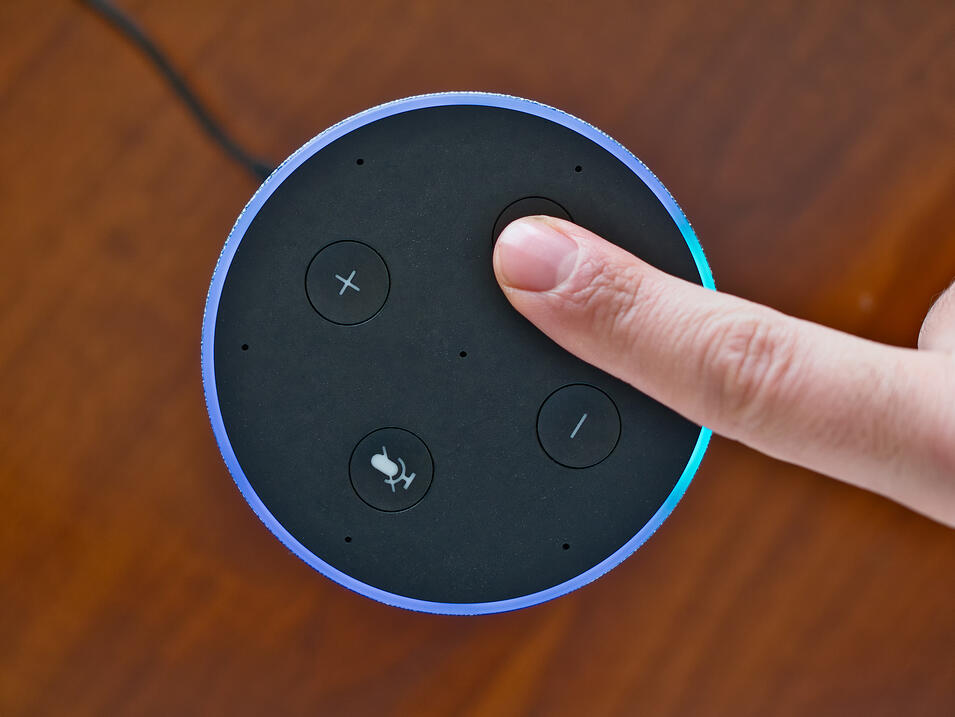How to be a part of the Smart Speaker Trend

The adoption of smart speaker technology is already set to outpace tablet adoption by the year 2021 and could skyrocket into an installation base of some 500 million units by 2023.
The adoption of smart speaker technology is already set to outpace tablet adoption by the year 2021 and could skyrocket into an installation base of some 500 million units by 2023.
The market’s primary products as of this writing are Alexa, Google Home, and Apple Homepod. While all three prohibit direct advertising, there are a number of key strategies that have enabled major brands to work around this ban. “Indirect advertising” on smart speaker systems should be a part of your company’s brand strategy as well.
Put another way, top of mind brand awareness is an important driver of purchase intent – a realization that corporations such as Domino’s, Zyrtec, HBO, Campbell’s, and Estee Lauder have leveraged to their advantage in the smart speaker sector. In fact, a recent Nielsen study found that approximately 90% of all purchase intent is driven by unaided (e.g. top of mind) brand awareness.
The question then becomes: how can you create this top of mind awareness for your brand as well using smart speakers?
Creating Effective (and Unobtrusive) Top of Mind Awareness
The few attempts at direct advertising from smart speakers and smart home systems have garnered mixed reviews. When Google Home developers tinkered with Google Assistant so that it interjected an advertisement for the newest “Beauty and the Beast” film, many customers were turned off by what they viewed as an unwelcome intrusion into their personal lives. (It didn’t help that Google later passive-aggressively defended this move.)
Skills Advertising
Partly in response to such backlash, Google Home and Alexa pivoted to allowing brands to create “skills advertising.” In effect, if a customer trains Alexa or Google Assistant to order products from a certain brand, or specifically requests information on promotions or other deals, then the brand in question is allowed to deliver audio messaging that markets a related product or service.
Brands have also created their own unique “skills,” such as:
- Tide’s Stain Remover skill, helping you to remove tough stains
- Zyrtec’s Your Daily AllergyCast skill, providing you information on how the weather may affect you today
- BuzzFeed’s Tasty action, pulling from hundreds of recipes to help you decide which meal to cook tonight
Companies that offer such branded skills can deploy advertising that targets users who employ them as part of their regular routine. But perhaps more importantly, such skills and actions consistently push brands to the forefront of users’ minds, thus achieving unaided awareness.
Alexa’s Flash Briefing
Alexa, in particular, is designed in such a way that daily user habits can be leveraged into marketing opportunities. For example, Alexa’s Flash Briefing provides customers with a quick overview of news and other content (such as comedy, lists, interviews, and so on). Brands can create a Flash Briefing skill, which basically means their content would be included in a customer’s daily flash briefing. Many brands have leveraged ad space on Alexa versions of podcasts, news sources, and music streaming that integrates nicely with the Flash Briefing feature.
Optimizing for Position Zero
Brands are also waging war to achieve position zero (aka Google’s “Answer Box”). Position zero offers a key advantage in the marketing sector, since Google’s Answer Box powers voice search for common questions. In other words, one company’s snippet is chosen, and everyone else loses.
Google “de-duplicated” position zero as of mid-January 2020 (ensuring that the answer box’s source link is pushed back to page 2). Still, the potential exposure to the voice search demographic that the featured snippet offers has opened up an entirely new dimension of marketing for online brands.
Leveraging Smart Speaker Technology for Marketing Success
“Indirect advertising” on smart speakers is not fit for action campaigns. Rather, it offers the potential to keep your brand top of mind for a large segment of your consumer base. What’s more, entrepreneurs and marketers that are not tech-savvy when it comes to coding can use templates, or “blueprints,” to create branded skills for smart speakers and home systems.
The marketing potential of smart speakers continues to expand by leaps and bounds. Only time will tell just how far these exciting capabilities will take us. But even now, it pays to be part of the smart speaker trend.
Share This
Subscribe
Stay on top of industry news and trends.
